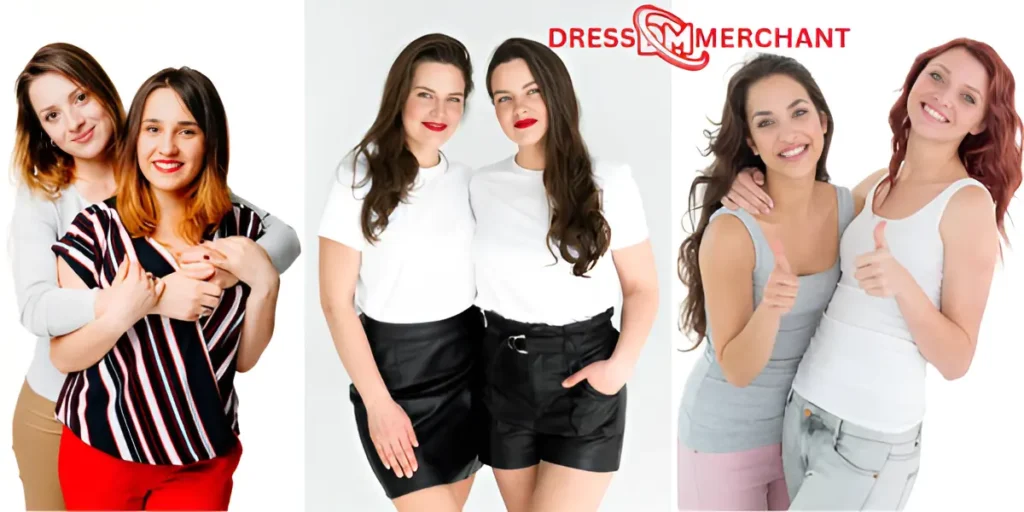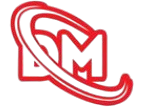T-Shirt Manufacturers in Bangladesh with Low Minimum Order are ideal for small to medium apparel businesses. At Dress Merchant, your trusted sourcing agent, we connect you with reliable garment manufacturers and exporters who offer high-quality T-shirts with flexible order quantities. Benefit from competitive pricing, superior craftsmanship, and smooth communication tailored to your sourcing needs. Partner with Dress Merchant for seamless apparel production and export solutions.
Thank you for reading this post, don't forget to subscribe!
1. Overview of the T-Shirt Manufacturing Industry in Bangladesh
1.1 Historical Development of Textile Manufacturing
The origins of Bangladesh’s garment industry trace back to the late 1970s, a period marked by the country’s initial attempts to build an export-oriented textile sector. In its early years, the industry primarily produced basic apparel, including simple T-shirts, for international markets. The focus was largely on meeting the growing demand from Western countries seeking low-cost clothing options. During this formative phase, government initiatives played a pivotal role in encouraging foreign investment and developing export-processing zones that attracted global buyers.
As the industry matured through the 1980s and 1990s, Bangladesh steadily improved its manufacturing capabilities by investing in workforce training and expanding factory infrastructure. The country’s abundant supply of skilled yet affordable labor became a key competitive advantage. Moreover, textile artisans refined their craft, enabling the production of a wider variety of fabrics and designs, including the increasingly popular T-shirt segment.
By the early 2000s, Bangladesh had cemented its reputation as a reliable source of apparel production. The garment sector evolved from producing only basic items to offering a range of products from everyday cotton T-shirts to innovative and fashion-forward pieces. Technological advancements, enhanced quality control measures, and compliance with international labor and safety standards further accelerated this growth, positioning Bangladesh as the world’s second-largest apparel exporter, just behind China.
1.2 Current Market Size and Export Data
Today, the T-shirt manufacturing industry is a cornerstone of Bangladesh’s booming apparel export market. The sector produces millions of T-shirts annually, catering to diverse consumer preferences worldwide. These products vary from affordable, mass-produced cotton tees to premium garments featuring unique prints, eco-friendly materials, and advanced fabric blends.
The country’s export data reflects a robust upward trajectory. With an annual revenue that runs into billions of dollars, Bangladesh supplies T-shirts to major global markets, including the United States, the European Union, and rapidly growing Asian economies. Buyers appreciate the excellent price-to-quality ratio that Bangladesh manufacturers offer, which allows retailers to remain competitive while maintaining acceptable margins.
Moreover, Bangladesh’s garment manufacturers have increasingly adopted sustainable production practices to meet the rising global demand for eco-conscious apparel. This shift has opened new market opportunities and enhanced the country’s image as a progressive textile manufacturing hub.
1.3 Importance of Low MOQ Manufacturers in the Industry
In recent years, low minimum order quantity (MOQ) manufacturers have gained prominence within Bangladesh’s T-shirt production landscape. These manufacturers serve a unique and growing segment of the market — emerging brands, startups, and niche apparel businesses that require smaller production runs.
Low MOQ options allow these businesses to test new designs, adjust inventory according to demand, and reduce financial risks associated with large bulk orders. This flexibility is especially valuable in today’s fast-paced fashion environment, where trends change rapidly and consumer preferences are highly variable.

Additionally, low MOQ manufacturers support the growing demand for customized and limited-edition apparel. Small batches can be tailored with specific colors, prints, or branding details, helping businesses differentiate themselves without the need for heavy upfront investments.
As e-commerce and direct-to-consumer sales channels expand, the role of these low MOQ manufacturers becomes even more crucial. They empower entrepreneurs and smaller retailers to enter the apparel market with competitive, high-quality T-shirts produced right within Bangladesh, leveraging the country’s strong textile heritage and manufacturing expertise.
2. Understanding Low Minimum Order Quantities in Bangladesh
2.1 What Constitutes a Low MOQ in Bangladesh?
In the context of Bangladesh’s garment industry, Minimum Order Quantities (MOQs) traditionally vary widely depending on the type and scale of the manufacturing unit. For many established garment factories, MOQs typically range from 1,000 to as high as 10,000 pieces per order. These numbers are often necessary to maintain cost efficiency due to the scale of production and the nature of factory workflows.
However, a growing segment of manufacturers in Bangladesh specialize in low MOQ production. These manufacturers accept significantly smaller orders, sometimes starting from as few as 50 to 300 pieces. This shift has opened up vast opportunities for smaller businesses, startups, independent designers, and niche brands to manufacture high-quality garments without committing to large volumes or tying up excessive capital.
Low MOQ manufacturers provide flexibility that contrasts with the traditional large-batch mindset, which can be a barrier to entry for many new market players. This smaller batch production model encourages innovation and allows brands to test new designs or seasonal trends without the financial risk of overproduction.
2.2 Factors Influencing MOQ Limits
Several critical factors influence the determination of MOQ in Bangladesh’s garment manufacturing sector. One of the primary considerations is the production cost structure, which includes raw material procurement, labor costs, and overhead expenses. For instance, fabric sourcing in bulk quantities often reduces per-unit costs, making large orders more economical. Consequently, smaller orders might incur higher costs per piece, which manufacturers factor into their MOQ policies.
Another important factor is the labor capacity and skill level within the factory. Factories that employ skilled manual labor or have flexible production lines can accommodate smaller orders more easily compared to highly automated facilities designed for mass production. Some factories invest in advanced machinery that can be quickly adjusted to produce smaller batches without lengthy setup times, which further enables them to accept low MOQ orders.
Moreover, the type of product and complexity of design also impact MOQ. Simple, standard garments are easier to produce in small quantities, whereas intricate designs requiring specialized fabrics, trims, or embroidery may necessitate higher minimums due to setup and material constraints.
Lastly, the relationship between buyers and manufacturers plays a significant role in MOQ flexibility. Long-term collaborations, trust, and mutual understanding often lead manufacturers to offer reduced MOQs or more customized production runs to valued clients, enabling them to support smaller orders without sacrificing profitability.
2.3 Advantages of Working with Low MOQ Factories
Partnering with low MOQ manufacturers in Bangladesh brings numerous advantages, especially for businesses aiming for agility and innovation. One major benefit is the ability to respond quickly to market trends and customer feedback. Small batch production means brands can launch products rapidly, gather consumer insights, and make timely improvements or adjustments without the burden of excess inventory.
Furthermore, low MOQ orders minimize financial risks and storage costs. By producing only the quantity needed, businesses avoid overstock situations, reduce waste, and optimize cash flow, which is crucial for startups and smaller enterprises operating on limited budgets.
Another advantage lies in fostering creative collaborations. Low MOQ factories often serve startups, independent designers, promotional product companies, and niche brands seeking exclusive or unique garment runs. This flexibility encourages experimentation with new styles, materials, and customizations that large factories might not accommodate due to their scale and efficiency requirements.
In addition, working with low MOQ manufacturers enables businesses to maintain product exclusivity and brand differentiation. Limited production runs create a sense of uniqueness and scarcity, appealing to customers who value originality and bespoke fashion.
Overall, low MOQ manufacturing in Bangladesh democratizes access to quality garment production, empowering a broader range of entrepreneurs and brands to participate in the global apparel market with reduced risk and greater creative freedom.
3. Top Quality Standards Among T-Shirt Manufacturers in Bangladesh
3.1 Material Sourcing and Fabric Quality
One of the most critical factors that set Bangladesh’s T-shirt manufacturers apart is their dedication to sourcing premium-quality raw materials. Leading manufacturers meticulously select cotton varieties known for their softness, durability, and breathability. These include combed cotton, which undergoes extra processing to remove impurities and short fibers, resulting in a smoother and stronger fabric ideal for high-end apparel.
In addition to combed cotton, ring-spun cotton is widely used due to its superior yarn strength and finer texture, which translates into more comfortable and long-lasting T-shirts. Increasingly, organic cotton is gaining traction as manufacturers respond to growing global demand for sustainable and eco-friendly textiles. Organic cotton, grown without harmful pesticides or synthetic fertilizers, not only benefits the environment but also ensures the fabric is gentle on sensitive skin.
Bangladesh benefits from a robust network of both local and imported fabric suppliers. Local suppliers often provide cost-effective, high-quality cotton fabrics, while imports from countries like India and China introduce a variety of textures and finishes. This blend of local and international sources gives manufacturers flexibility in meeting diverse market requirements, whether for casual wear, athletic apparel, or luxury garments. Strict quality control measures at the sourcing stage help guarantee fabric consistency, colorfastness, and shrinkage resistance — all vital attributes for superior T-shirt manufacturing.
3.2 Stitching, Seam Strength, and Finishing
The structural integrity of a T-shirt heavily depends on the quality of stitching and finishing techniques used during production. Bangladeshi manufacturers emphasize high-standard sewing methods that enhance both durability and wearer comfort. Factories employ advanced machinery and skilled operators who specialize in techniques such as double-needle stitching, which reinforces the shoulder seams and hems, preventing premature wear and tear.
Seam strength testing is a routine part of quality assurance in these factories. This involves evaluating how well seams hold up under stress and repeated washing cycles, ensuring the garments can withstand everyday use without losing shape or falling apart. Besides stitching, manufacturers pay close attention to thread selection, opting for high-tensile polyester or cotton threads that complement the fabric’s properties.

Finishing touches such as reinforced collars, neckbands, and sleeve hems not only improve the aesthetic appeal of the T-shirts but also contribute significantly to their longevity. Many manufacturers incorporate pre-shrinking and washing treatments to minimize post-purchase shrinkage, maintaining the original fit and feel customers expect. The combination of precise stitching, superior seam strength, and meticulous finishing makes Bangladeshi T-shirts competitive in demanding international markets.
3.3 Certifications and Compliance
In today’s global apparel industry, certifications and compliance with international standards are essential benchmarks of quality and responsibility. Many reputable T-shirt manufacturers in Bangladesh hold certifications such as OEKO-TEX, WRAP, and GOTS, which serve as assurances to global buyers about product safety, environmental sustainability, and ethical production practices.
The OEKO-TEX certification verifies that fabrics are free from harmful chemicals, making garments safe for consumers, especially those with sensitive skin. The WRAP (Worldwide Responsible Accredited Production) certification highlights adherence to ethical labor standards, ensuring factories provide fair wages, safe working conditions, and prohibit child labor. GOTS (Global Organic Textile Standard) certification is particularly important for manufacturers focusing on organic cotton T-shirts, as it confirms that every stage of production—from harvesting to processing—is environmentally and socially responsible.
Additionally, compliance with international labor laws and corporate social responsibility (CSR) initiatives is a priority for Bangladesh’s leading manufacturers. They implement strict workplace safety protocols and support community development programs, thereby fostering long-term partnerships with global brands that value sustainable and ethical sourcing.
Through maintaining these high-quality standards and certifications, T-shirt manufacturers in Bangladesh successfully build trust with buyers worldwide, enabling them to compete with top global apparel producers.
4. Customization Services Offered by Low MOQ T-Shirt Manufacturers
Low MOQ (Minimum Order Quantity) T-shirt manufacturers have revolutionized the way small and emerging brands enter the apparel market. One of the key advantages they offer is a comprehensive range of customization services that allow businesses to create distinctive products without the burden of large inventory commitments. These customization options span printing and embroidery techniques, fabric and color choices, as well as labeling and packaging solutions—each contributing to a brand’s unique identity and competitive edge.
4.1 Printing and Embroidery Options
When it comes to applying designs onto T-shirts, low MOQ manufacturers typically provide a variety of advanced techniques tailored to suit different artistic needs and budget considerations. Screen printing remains a popular choice due to its vibrant color output and cost-effectiveness for mid-sized runs. However, smaller brands benefit greatly from direct-to-garment (DTG) printing, which allows for high-resolution, full-color prints on-demand without the need for screens or large setups.
Heat transfer printing is another flexible option often offered, enabling detailed designs and even photographic images to be transferred to fabric. This method is ideal for limited edition collections or highly customized pieces. Embroidery, on the other hand, lends a premium and textured look that is perfect for logos, monograms, and intricate patterns. It adds an element of craftsmanship and durability to the apparel, appealing especially to brands targeting upscale or corporate markets.
Together, these printing and embroidery services provide small brands the opportunity to experiment with a wide range of design styles, creating apparel that stands out in crowded marketplaces and resonates with their target customers.
4.2 Fabric and Color Selection
Fabric choice is fundamental to the quality and appeal of T-shirts, and low MOQ manufacturers understand this well. Unlike traditional large-scale producers who may restrict selections to a few standard materials, these manufacturers typically offer an extensive variety of fabric blends. Popular options include 100% cotton for breathability and comfort, cotton-polyester blends that enhance durability and wrinkle resistance, and triblends which combine cotton, polyester, and rayon for a soft, vintage feel.
Performance fabrics that wick moisture and provide stretch are also increasingly accessible, catering to activewear and athleisure markets. This diversity enables brands to precisely tailor their product offerings according to the preferences and needs of niche audiences, such as eco-conscious consumers or sports enthusiasts.
Color options are equally important. Low MOQ manufacturers often maintain a broad palette ranging from classic neutrals to vibrant hues and seasonal shades. This variety empowers brands to develop cohesive collections or limited runs that capture attention and reflect current trends without being locked into mass production cycles.
4.3 Labeling and Packaging Solutions
Brand identity extends beyond the fabric and design of a T-shirt—it is equally expressed through labels, tags, and packaging. Low MOQ manufacturers recognize the importance of these finishing touches and provide customization options even for small batch orders. Custom woven or printed labels allow brands to convey their story, care instructions, or size information professionally.
Additionally, unique packaging solutions such as branded boxes, eco-friendly wraps, or personalized tags contribute significantly to the overall consumer experience. These details enhance retail presentation and increase perceived value, helping small brands compete effectively with larger companies that have extensive marketing resources.
By offering flexible labeling and packaging, low MOQ manufacturers empower businesses to maintain consistency in their branding efforts and build strong customer loyalty without the typical overhead costs associated with bulk orders.
5. Cost-Effectiveness and Pricing Strategies
5.1 Competitive Pricing Models in Bangladesh
Bangladesh has emerged as a global hub for garment manufacturing due to its highly competitive pricing models, which appeal especially to buyers looking for affordable yet quality products. One significant advantage is the country’s acceptance of low Minimum Order Quantities (MOQs), which offers flexibility to small and medium-sized businesses that cannot commit to large-scale orders.
Despite catering to these smaller quantities, manufacturers in Bangladesh maintain cost competitiveness through several strategic approaches. First, many factories have optimized their production workflows to reduce waste and increase efficiency. Streamlined processes mean fewer delays and better use of labor, allowing manufacturers to keep overheads low.
Moreover, Bangladeshi manufacturers leverage economies of scale in sourcing raw materials. Since many suppliers serve large volumes of fabric and trims to multiple factories, the bulk purchasing power translates into lower costs per unit. This advantage is passed down to buyers, enabling competitive pricing even for orders that do not meet traditional large MOQ thresholds.
Additionally, labor costs in Bangladesh remain relatively affordable without compromising skill levels. The workforce is well-trained in garment production, which helps maintain high-quality standards alongside cost-efficiency. By combining efficient labor management with smart material sourcing and lean production techniques, manufacturers can offer highly competitive prices in the global market.
5.2 Cost Breakdown for Low MOQ T-Shirt Orders
When placing low MOQ T-shirt orders, understanding the cost structure is essential for buyers who want to maximize their investment. The main cost components typically include fabric, labor, printing or embellishment, packaging, and logistics.
Fabric usually constitutes the largest portion of the cost, influenced by the quality, type (e.g., cotton, polyester, blends), and sourcing location. For low MOQ runs, manufacturers might have to allocate smaller batches of fabric, which can sometimes increase costs compared to bulk orders where fabric is bought in large quantities.
Labor costs, though generally affordable in Bangladesh, vary depending on the complexity of the design and production techniques. Simple T-shirts with basic stitching will incur lower labor costs than those requiring intricate embroidery or multiple printing colors.
Printing and embellishment add another layer of cost, especially if specialized techniques like screen printing, heat transfer, or embroidery are used. Packaging costs depend on the type of packaging selected — standard poly bags are more economical, while customized or branded packaging may increase the price per piece.
Lastly, logistics and shipping expenses also influence the final cost. Bangladesh’s well-established garment export infrastructure ensures relatively cost-effective and timely delivery options, although expedited shipping or special handling can add to overall expenses.
While pricing for low MOQ orders is generally higher per piece than large bulk orders, it remains affordable and competitive when compared with other garment manufacturing hubs like China, India, or Vietnam. This balance between flexibility and cost-effectiveness is a major factor attracting international buyers to Bangladesh.
5.3 Negotiation Tips to Secure Better Rates
Successfully negotiating favorable pricing on low MOQ orders requires a strategic approach focused on building long-term relationships and leveraging value-added services.
One effective tip is to establish strong partnerships with manufacturers. When suppliers view buyers as potential long-term collaborators rather than one-time customers, they are often more willing to offer discounted rates or additional services. Demonstrating commitment by placing repeat orders or agreeing to slightly higher volumes over time can strengthen this partnership.
Another negotiation tactic involves bundling services. For example, combining printing, packaging, and shipping through a single supplier can reduce overall costs because manufacturers can streamline processes and offer package deals. Buyers who take advantage of these bundled services often enjoy better pricing than if they source each service separately.
Clear communication is also crucial during negotiations. Buyers should be transparent about their budget constraints and expected order volumes. In return, suppliers may suggest cost-saving adjustments such as alternate materials, simpler designs, or extended lead times to lower prices.
Lastly, maintaining flexibility in delivery schedules or payment terms can provide leverage for better pricing. For instance, agreeing to longer lead times or partial advance payments can improve cash flow for manufacturers, who might pass on those savings as discounts to buyers.
By applying these negotiation strategies, buyers can secure more favorable pricing on low MOQ orders without compromising quality, making Bangladesh an even more attractive sourcing destination.
6. Sustainable and Ethical Manufacturing Practices
In recent years, the fashion and textile industry has faced increasing pressure to adopt more sustainable and ethical manufacturing practices. Consumers, brands, and regulators alike are demanding that manufacturers not only deliver quality products but also do so in ways that minimize environmental harm and promote social responsibility. Bangladesh, as a leading garment manufacturing hub, is making significant strides in this direction by integrating sustainability and ethics into its production processes. This commitment benefits not only the environment but also the well-being of workers and the overall reputation of the industry.
6.1 Eco-Friendly Material Use
One of the most prominent shifts in sustainable manufacturing is the adoption of eco-friendly materials. Many manufacturers are now choosing organic cotton, recycled fabrics, and other sustainable textiles as alternatives to conventional materials. Organic cotton is grown without harmful pesticides and synthetic fertilizers, which helps preserve soil health and reduces water consumption. Similarly, recycled fabrics—often made from post-consumer waste like plastic bottles or discarded garments—help divert waste from landfills and lower the demand for virgin resources.
In addition to the choice of raw materials, the use of non-toxic, water-based, or low-impact dyes has gained traction. These dyes reduce chemical pollution and water contamination, making the dyeing process less harmful to ecosystems. For manufacturers in Bangladesh, aligning with these eco-friendly practices is essential to meet the expectations of a global market that increasingly values environmental responsibility. Brands worldwide are actively seeking suppliers who can provide certifications for organic and recycled materials, ensuring traceability and authenticity.
6.2 Fair Labor and Worker Welfare
Ethical manufacturing goes hand in hand with ensuring fair labor practices and the welfare of workers. The garment industry has historically faced scrutiny over poor working conditions, unfair wages, and lack of workers’ rights. However, leading factories in Bangladesh have been working hard to improve these conditions through transparent policies and rigorous social compliance programs.
Fair wages are central to these efforts, ensuring workers earn a living wage that supports their families. Safe working conditions are equally prioritized, with factories implementing strict health and safety protocols, fire prevention measures, and regular training sessions. Many manufacturers also invest in employee welfare programs that provide access to healthcare, education, and childcare services.
Buyers and international brands increasingly demand transparency, requiring detailed audits and compliance certificates. This drives Bangladeshi factories to maintain high standards and promote a culture of accountability. Ethical manufacturing practices not only improve worker satisfaction and productivity but also enhance the credibility and competitiveness of manufacturers on the global stage.
6.3 Waste Reduction and Energy Efficiency
Sustainability in garment manufacturing also extends to operational efficiency. Waste reduction and energy efficiency are vital components of eco-conscious production strategies. Many factories in Bangladesh employ lean manufacturing techniques designed to minimize material waste during cutting, sewing, and finishing processes.
Recycling programs are also becoming more common, where fabric scraps and defective products are repurposed or processed into new materials, thus reducing landfill contributions. Alongside waste management, factories are investing in energy-efficient machinery and renewable energy sources, such as solar power, to lower their carbon footprint.
Energy efficiency not only helps protect the environment but also reduces operational costs, creating a win-win scenario for manufacturers. These sustainable practices resonate well with environmentally aware customers and brands, strengthening business relationships and ensuring long-term viability in a competitive market.
7. Lead Times and Production Capacities for Small Orders
7.1 Typical Production Timeframes
When it comes to small order quantities (low MOQs), production timelines can vary significantly based on several factors. Generally, manufacturers estimate that production for small orders takes anywhere from 2 to 6 weeks. This timeframe is influenced primarily by the complexity of the design. Simple styles with minimal customization tend to be completed faster, while intricate designs with detailed elements require more time for sample approval, pattern making, and production.
Fabric availability also plays a crucial role in determining lead times. If the selected fabric is readily available in the manufacturer’s inventory or from local suppliers, production can proceed without delay. However, if the fabric needs to be specially ordered, sourced internationally, or custom-dyed, lead times naturally extend. Additionally, some customization options such as embroidery, printing, or unique trims may add further time depending on the processes involved.
Manufacturers working with small orders often prioritize these runs to maintain customer satisfaction and compete in the fast-moving market of emerging or niche brands. As a result, smaller batch orders can sometimes benefit from faster turnaround times compared to larger bulk orders, which might require more extensive scheduling and resource allocation.
7.2 Balancing Speed and Quality
One of the biggest challenges manufacturers face when handling low MOQ orders is balancing speed with quality. Rushing production can lead to errors or subpar finishes, but delays can frustrate clients and disrupt their business plans. Experienced factories address this challenge by streamlining their workflow and implementing rigorous quality control measures throughout every stage of the process.
Advanced planning and resource management allow manufacturers to allocate dedicated teams or specialized equipment for small order runs, ensuring that speed does not come at the cost of craftsmanship. Frequent quality checks are integrated during sampling, cutting, sewing, and finishing phases to detect any defects early and avoid costly reworks later.
Furthermore, many manufacturers maintain close communication with clients during production, sharing progress updates and sample approvals. This transparency helps catch potential issues early and reassures clients that quality remains a top priority, even within tight deadlines.
7.3 Scalability Options for Growing Brands
Small MOQ manufacturers understand that many of their clients are startups or emerging brands looking to grow gradually. To support this growth, they typically offer scalable production solutions that allow businesses to increase their order sizes over time without the need to switch suppliers.
This scalability ensures continuity in product quality, lead times, and supplier relationships—factors that are crucial for maintaining brand consistency and operational efficiency. As brands grow, manufacturers can adjust production schedules and capacity to accommodate larger volumes, often providing tiered pricing or flexible payment terms.
By partnering with manufacturers who specialize in both small and larger runs, brands gain the advantage of a trusted supplier that understands their evolving needs and can adapt quickly. This approach reduces the risks and complexities often involved in transitioning between different production partners, helping brands to focus on their core business growth.
8. Logistics, Shipping, and Export Services
Efficient logistics and shipping services are a crucial part of the garment manufacturing industry, especially for companies exporting from Bangladesh. The ability to deliver products reliably and on time plays a significant role in maintaining strong business relationships and ensuring customer satisfaction. Manufacturers in Bangladesh have developed comprehensive logistics solutions that cater to the diverse needs of international buyers, from small parcels to bulk shipments.
8.1 Shipping Options from Bangladesh
Manufacturers typically offer multiple shipping options to accommodate different buyer requirements. The most common modes of shipping include sea freight, air freight, and express courier services. Sea freight remains the most economical and widely used method for large shipments, especially for bulk orders. It is cost-effective but takes longer transit times compared to air freight. On the other hand, air freight is favored when speed is a priority, such as for urgent deliveries or limited-quantity consignments. Though air freight is more expensive, it provides a significant advantage for buyers needing quick turnaround times.
Express courier services like DHL, FedEx, or UPS are ideal for small shipments, samples, or urgent documents. These couriers offer door-to-door services with fast delivery times and detailed tracking. The flexibility in choosing the shipping mode allows buyers to balance cost, speed, and convenience depending on their business priorities. Additionally, manufacturers often help guide buyers to select the most appropriate shipping method based on the destination country’s logistics infrastructure and customs requirements.
8.2 Customs and Documentation Assistance
Navigating the complex world of international shipping regulations can be daunting, especially for buyers new to importing from Bangladesh. Leading garment manufacturers provide full support in handling export documentation and customs clearance. This includes preparing essential paperwork such as commercial invoices, packing lists, certificates of origin, export licenses, and compliance certificates.
Manufacturers with experience in international trade are well-versed in the regulatory requirements of major importing countries. They assist buyers by ensuring all documentation complies with both Bangladeshi export regulations and the import rules of the destination country. This reduces delays and minimizes the risk of shipment hold-ups or fines at customs. Additionally, many manufacturers maintain strong relationships with freight forwarders and customs brokers to streamline the export process.
8.3 Tracking and Delivery Reliability
Modern supply chain management tools have revolutionized how shipments are monitored and managed. Reputable garment factories implement advanced tracking systems that allow buyers to follow their orders from production to delivery. These systems provide real-time updates on shipment status, location, and expected arrival times, offering full transparency.
Reliable delivery is a key factor in building buyer trust. Manufacturers focus on partnering with dependable logistics providers and shipping companies known for timely performance. By monitoring every stage of the shipping process, manufacturers can quickly address any unforeseen issues such as transit delays or customs inspections. This proactive approach ensures that shipments reach buyers on schedule and in excellent condition, helping maintain a smooth and efficient supply chain.
9. Choosing the Right T-Shirt Manufacturer in Bangladesh
Selecting the right T-shirt manufacturer is a crucial step for any business aiming to produce high-quality garments while maintaining cost efficiency and timely delivery. Bangladesh has become a global hub for textile and garment manufacturing due to its skilled workforce, competitive pricing, and extensive experience in apparel production. However, with a multitude of manufacturers available, careful evaluation is essential to find a partner that matches your brand’s specific requirements and standards.
9.1 Evaluating Factory Capabilities
When choosing a manufacturer, a thorough assessment of their factory capabilities is fundamental. This includes examining the production technology they employ, such as the type of machinery used for cutting, stitching, printing, and finishing. Modern, well-maintained equipment often correlates with higher productivity, consistent quality, and the ability to incorporate advanced garment features.
Quality control systems are another vital component to evaluate. Manufacturers who implement rigorous quality checks at multiple stages of production tend to deliver more reliable products that meet international standards. This might include automated inspection machines, manual quality inspections, and sample testing for fabric durability and colorfastness.
Reviewing a manufacturer’s past client portfolios and production experience can also provide valuable insights. Understanding the types of products they have previously handled, the scale of their operations, and any niche specialties—such as organic cotton garments or performance wear—can help determine if they are a good fit for your product line.
9.2 Importance of Factory Visits and Audits
Factory visits and audits are key tools for verifying a manufacturer’s claims and gaining firsthand knowledge of their operations. Whenever possible, arranging a visit to the production site allows you to observe working conditions, machinery, and workflow efficiency. Seeing the factory in action can help assess cleanliness, safety standards, employee welfare, and the overall professionalism of the operation.
If an in-person visit is not feasible, commissioning third-party audits can serve as a reliable alternative. Professional audit firms specialize in evaluating compliance with labor laws, environmental standards, and quality management systems. These audits can also highlight any potential risks such as labor violations or inconsistent production practices.
Regular audits and visits foster transparency and build trust between buyers and suppliers. They also enable manufacturers to receive constructive feedback and continuously improve their processes to better serve client needs.
9.3 Leveraging Buyer Reviews and Testimonials
In today’s interconnected marketplace, buyer reviews and testimonials are invaluable resources for making informed decisions. Feedback from previous and current customers offers practical insights into a manufacturer’s reliability, communication skills, and adherence to deadlines. Positive reviews generally reflect a manufacturer’s commitment to quality and customer satisfaction.
Case studies or success stories shared by buyers can reveal how a manufacturer handled challenges, scaled production during peak seasons, or innovated to meet unique design requests. Such information helps gauge the manufacturer’s flexibility and problem-solving capabilities.
Engaging with other brands or industry forums can also provide firsthand accounts of experiences with specific factories. This collective knowledge reduces the risk of partnering with manufacturers who might compromise your brand reputation through subpar quality or delivery delays.
10. Emerging Trends and Future Outlook for Low MOQ T-Shirt Manufacturing in Bangladesh
10.1 Adoption of Digital Technologies
The landscape of low MOQ (Minimum Order Quantity) T-shirt manufacturing in Bangladesh is undergoing a significant transformation driven by the adoption of advanced digital technologies. Traditionally, small-batch production faced challenges such as higher costs, longer lead times, and inconsistent quality. However, with the increasing integration of digital design tools, manufacturers are now able to streamline the product development phase. Digital design software enables quick iterations and precise customization, allowing clients to visualize their ideas in real-time and make changes without costly physical samples.
In addition, automated cutting machines have revolutionized the fabric preparation stage by minimizing material wastage and improving cutting accuracy. These machines can be programmed to handle small production runs efficiently, which is ideal for low MOQ orders. Furthermore, AI-powered quality inspection systems are increasingly being implemented on factory floors. These systems use computer vision and machine learning algorithms to detect defects early in the production process, ensuring consistent quality even in smaller batches. This technology reduces human error and speeds up inspection times, resulting in a more reliable manufacturing process.
Overall, the adoption of these digital technologies is helping Bangladeshi manufacturers maintain competitive pricing and quick turnaround times while meeting the high standards expected by modern consumers. It also supports sustainability efforts by optimizing resource use, which is an important consideration in today’s apparel market.
10.2 Growing Demand for Personalized Apparel
Another notable trend influencing the future of low MOQ T-shirt manufacturing in Bangladesh is the rapidly growing demand for personalized and limited-edition apparel. Consumers, especially millennials and Gen Z shoppers, increasingly seek unique clothing that reflects their individual style and values. This shift in consumer preference has pressured manufacturers to adapt by offering more flexible production models.
Manufacturers are now developing agile production pipelines that can accommodate small orders without sacrificing efficiency. This flexibility allows brands and retailers to experiment with designs, launch capsule collections, and respond quickly to market trends. Rapid design-to-delivery cycles have become essential, supported by digital tools and improved logistics networks.
Additionally, personalized apparel often involves customization options such as custom prints, embroidery, or fabric blends. Low MOQ manufacturers in Bangladesh are investing in versatile machinery and skilled labor to handle these variations at scale. By catering to the personalization trend, Bangladeshi manufacturers are not only expanding their customer base but also moving up the value chain in the global apparel market.
10.3 Impact of Global Trade Policies and Tariffs
Global trade policies and tariffs continue to play a pivotal role in shaping sourcing strategies for apparel brands worldwide. Bangladesh’s position as one of the largest garment exporters has been impacted by these shifts, with implications for low MOQ T-shirt manufacturing.
Recent changes in trade agreements and tariff structures, especially between major economies, have created both challenges and opportunities. Bangladesh has leveraged its competitive advantages by securing favorable trade deals and tariff exemptions, particularly under frameworks like the Generalized System of Preferences (GSP) and preferential access agreements with the European Union and other markets.
These trade benefits make Bangladesh an attractive sourcing destination compared to other countries with higher tariff burdens. For low MOQ manufacturing, this means brands can achieve cost-effective production runs while complying with import regulations. Additionally, manufacturers in Bangladesh are increasingly diversifying their markets and building resilience against geopolitical uncertainties by exploring new trade partnerships.
The dynamic trade environment underscores the need for manufacturers to stay informed and agile. By doing so, Bangladesh’s low MOQ T-shirt manufacturing sector can capitalize on global trends, enhancing its reputation as a reliable, cost-competitive, and innovative hub for small-batch apparel production.
Conclusion: T-Shirt Manufacturers in Bangladesh with Low Minimum Order
Bangladesh has firmly established itself as a global hub for quality T-shirt manufacturing, especially for businesses seeking low minimum order quantities. The country’s unique combination of skilled labor, advanced production facilities, competitive pricing, and commitment to ethical and sustainable practices makes it an ideal destination for startups, small brands, and niche apparel businesses. By partnering with low MOQ manufacturers in Bangladesh, buyers can enjoy flexibility, customization, and rapid turnaround times without compromising on quality.
As the market continues to evolve with technological advancements and growing consumer demand for personalized apparel, Bangladesh’s manufacturers are adapting to meet these challenges efficiently. Whether you are launching a new clothing line or expanding an existing brand, leveraging Bangladesh’s low MOQ T-shirt manufacturers provides a strategic advantage to enter and thrive in the competitive global fashion marketplace.
Choosing the right manufacturer requires careful evaluation of quality standards, production capabilities, and logistical support, but the benefits of working with Bangladesh’s garment industry leaders are undeniable. With robust infrastructure, export expertise, and a dedication to innovation, Bangladesh stands ready to fulfill your T-shirt manufacturing needs—helping you bring your apparel vision to life with confidence and success.













